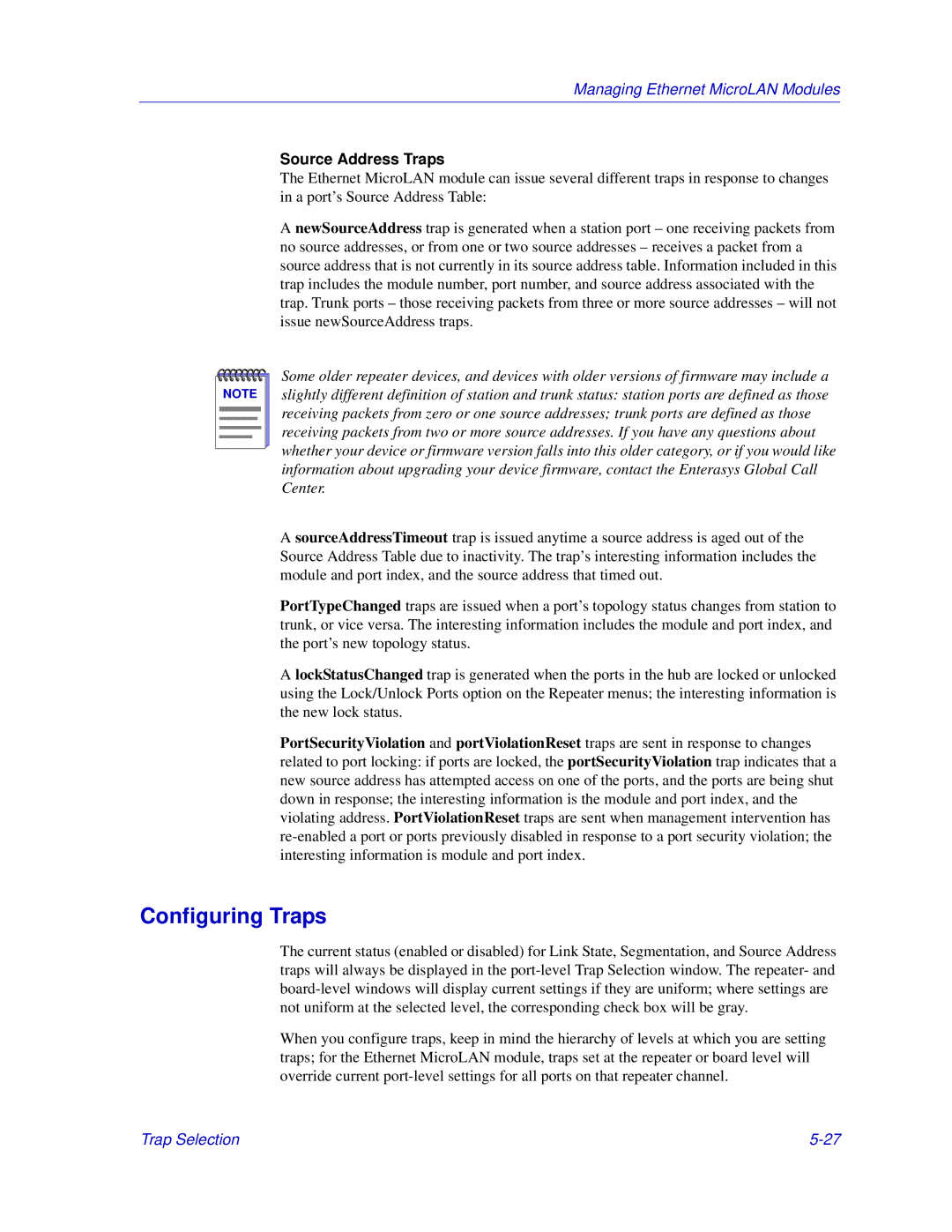
Managing Ethernet MicroLAN Modules
Source Address Traps
The Ethernet MicroLAN module can issue several different traps in response to changes in a port’s Source Address Table:
A newSourceAddress trap is generated when a station port – one receiving packets from no source addresses, or from one or two source addresses – receives a packet from a source address that is not currently in its source address table. Information included in this trap includes the module number, port number, and source address associated with the trap. Trunk ports – those receiving packets from three or more source addresses – will not issue newSourceAddress traps.
NOTE |
Some older repeater devices, and devices with older versions of firmware may include a slightly different definition of station and trunk status: station ports are defined as those receiving packets from zero or one source addresses; trunk ports are defined as those receiving packets from two or more source addresses. If you have any questions about whether your device or firmware version falls into this older category, or if you would like information about upgrading your device firmware, contact the Enterasys Global Call Center.
A sourceAddressTimeout trap is issued anytime a source address is aged out of the Source Address Table due to inactivity. The trap’s interesting information includes the module and port index, and the source address that timed out.
PortTypeChanged traps are issued when a port’s topology status changes from station to trunk, or vice versa. The interesting information includes the module and port index, and the port’s new topology status.
A lockStatusChanged trap is generated when the ports in the hub are locked or unlocked using the Lock/Unlock Ports option on the Repeater menus; the interesting information is the new lock status.
PortSecurityViolation and portViolationReset traps are sent in response to changes related to port locking: if ports are locked, the portSecurityViolation trap indicates that a new source address has attempted access on one of the ports, and the ports are being shut down in response; the interesting information is the module and port index, and the violating address. PortViolationReset traps are sent when management intervention has
Configuring Traps
The current status (enabled or disabled) for Link State, Segmentation, and Source Address traps will always be displayed in the
When you configure traps, keep in mind the hierarchy of levels at which you are setting traps; for the Ethernet MicroLAN module, traps set at the repeater or board level will override current
Trap Selection |
